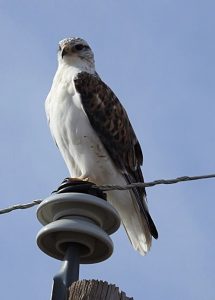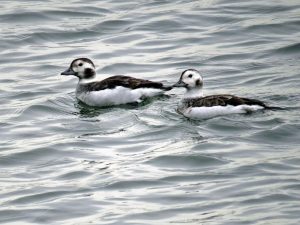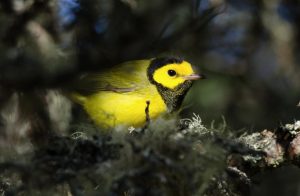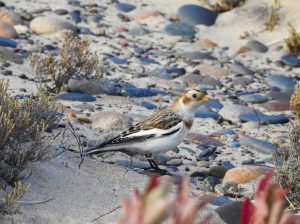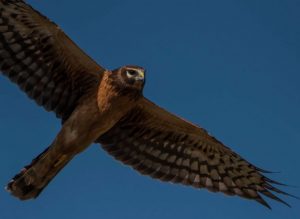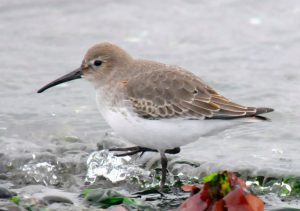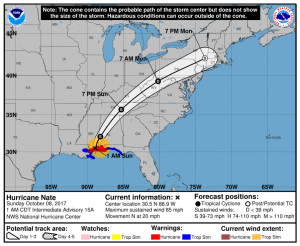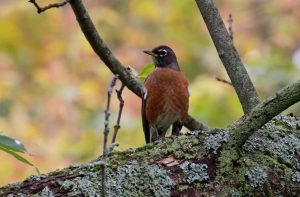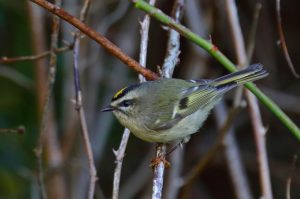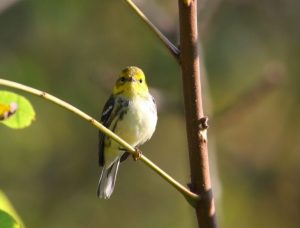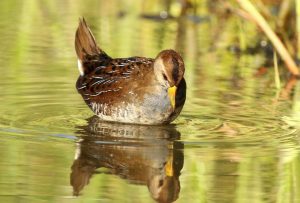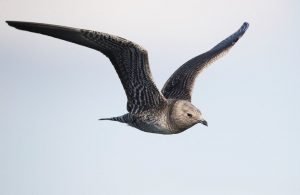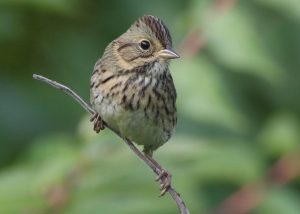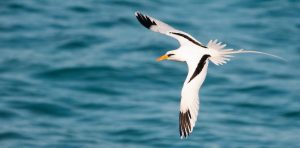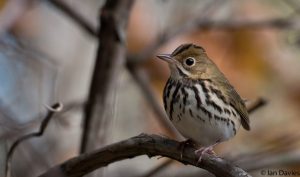News
Continental Summary Local light and moderate flights were the norm in the West featuring Common and Barrow’s Goldeneyes, Trumpeter Swan, Bonaparte’s Gull, Snowy Owl, American Kestrel, and Horned Lark, while moderate and heavy flights occurred in numerous areas of the East featuring Canvasback, Common Goldeneye, Hooded, Red-breasted and Common Mergansers, Tundra Swan, Bonaparte’s Gull, Snow […] Read more...
Marginal and favorable migration conditions for light to moderate flights are scattered across the West for the middle of the period and will feature White-winged Scoter, Common Loon, Clark's Grebe, California Gull, Merlin, American Pipit, and Ruby-crowned Kinglet, while a major pulse of moderate to heavy flights in favorable migration conditions for the East will feature Greater White-fronted Goose, American Wigeon, Northern Pintail, Surf Scoter, White-winged Scoter, Vesper Sparrow, Fox Sparrow, Dark-eyed Junco, and Red-winged Blackbird. Read more...
Continental Summary Marginal and favorable migration conditions for light to moderate flights are scattered across the West for the middle of the period and will feature White-winged Scoter, Common Loon, Clark’s Grebe, California Gull, Merlin, American Pipit, and Ruby-crowned Kinglet, while a major pulse of moderate to heavy flights in favorable migration conditions for the […] Read more...
Light and locally moderate movements featuring Common Goldeneye, Hooded Merganser, Tundra Swan, Bonaparte's Gull, Say's Phoebe, American Pipit, and Rusty Blackbird, were the norm in some parts of the West, while pulses of locally moderate to heavy flights came to the East and featured Bufflehead, Hooded Merganser, Ross's Goose, Common Loon, Rough-legged Hawk, Herring Gull, Hermit Thrush, Snow Bunting, and Dark-eyed Junco. Read more...
A strong low pressure center moving up the Atlantic Coast late during the week of 23 October 2017 produced favorable conditions to transport Neotropical migrants on the move, presumably from the southeastern US, far to the north of their intended destinations. Read more...
Favorable migration conditions with light to moderate movements featuring Common Goldeneye, Hooded Merganser, Ross's Goose, Canada Goose, Pacific Loon, Western Grebe, Red-necked Grebe, Dunlin, and Ring-billed Gull come early in the period to some areas of the West, several pulses of favorable migration conditions bring moderate to very heavy movements to the East that will feature American Wigeon, Pied-billed Grebe, Sharp-shinned Hawk, Northern Harrier, Sandhill Crane, Eastern Phoebe, House Wren, and Pine Siskin. Read more...
Scattered light to moderate movements occurred in the West this week featuring Bufflehead, Canvasback, Lesser Scaup, Red-breasted Merganser, Western Grebe, Horned Grebe, Bonaparte's Gull, Herring Gull, American Pipit, while pulses of moderate to locally very heavy movements featuring Common Goldeneye, Ring-necked Duck, Rough-legged Hawk, Franklin's Gull, Golden-crowned Kinglet, Hermit Thrush, White-throated Sparrow, American Tree Sparrow, and Common Redpoll occurred in the East. A displacement of Neotropical migrants to points far north of their typical ranges occurred and continued to unfold at the end of the period in New England and the Canadian Maritimes. Read more...
Several pulses of favorable migration conditions bring mid to late period moderate flights featuring Common Loon, Dunlin, Bonaparte's Gull, Belted Kingfisher, Golden-crowned Kinglet, Ruby-crowned Kinglet, Marsh Wren, Hermit Thrush, and White-throated Sparrow to many areas of the West, while two frontal passages spawn moderate to very heavy flights featuring Double-crested Cormorant, Northern Harrier, Belted Kingfisher, Vesper Sparrow, Common Grackle, and Red-winged Blackbird in the East. Read more...
Locally moderate flights occurred in the West during this period and featured Bufflehead, Lesser Scaup, Dunlin, Herring Gull, Mew Gull, Ruby-crowned Kinglet, Hermit Thrush, and American Pipit, while a significant pulse of moderate to very heavy flights occurred in the East and featured Brant, Bufflehead, Surf Scoter, American Coot, Bonaparte's Gull, Hermit Thrush, Lapland Longspur, American Tree Sparrow, White-throated Sparrow, and Swamp Sparrow. Read more...
Early and late period migration conditions will be favorable for light to moderate flights in the West that feature Sharp-shinned Hawk, Belted Kingfisher, Northern Flicker, Ruby-crowned Kinglet, Yellow-rumped Warbler, Western Meadowlark, Golden-crowned Sparrow, and Fox Sparrow, while the passage of a significant frontal boundary brings moderate to very heavy flights of Cooper's Hawk, Franklin's Gull, Belted Kingfisher, Northern Flicker, Brown Creeper, Ruby-crowned Kinglet, Savannah Sparrow, Le Conte's Sparrow, Song Sparrow, and White-throated Sparrow to the East. Read more...
Hurricane Nate came ashore in Mississippi late Saturday night and early Sunday morning. Although this storm did not pack the strong winds or very heavy rains of recent hurricanes in the Gulf of Mexico or Caribbean, all such storms are dangerous and require the utmost respect in terms of putting safety first (particularly with respect […] Read more...
Pulses of moderate movements that feature Cackling Goose, Western Grebe, Herring Gull, Northern Flicker, American Robin, Yellow-rumped Warbler, and White-crowned Sparrow will be the norm for the first half of the period in the West, while late period moderate to very heavy flights featuring Cooper's Hawk, Peregrine Falcon, Marsh Wren, Sedge Wren, Gray Catbird, Pine Warbler, Yellow-rumped Warbler, Eastern Towhee, and Nelson's Sparrow will occur in the East after the passage of the remnants of Hurricane Nate. Hurricane Nate will bring the potential for Gulf of Mexico pelagic species far inland in the first half of the period. Read more...
Moderate flights that featured Snow Goose, Greater Scaup, Eared Grebe, Ruby-crowned Kinglet, Hermit Thrush, and Golden-crowned Sparrow were the norm in many areas of the West this week, while several pulses of heavy flights occurred in the East and featured Ruddy Duck, Yellow-bellied Sapsucker, Ruby-crowned Kinglet, Rusty Blackbird, Fox Sparrow, Swamp Sparrow, Harris's Sparrow, and Purple Finch. Read more...
Favorable migration conditions from mid weekend through the middle of the work week bring light and moderate flights featuring Greater White-fronted Goose, Cooper's Hawk, Red-shouldered Hawk, Black-bellied Plover, Townsend's Warbler, and Lincoln's Sparrow to the West this period, while moderate to very heavy flights that feature Swainson's Hawk, American Golden-Plover, Northern Flicker, Eastern Phoebe, Blue-headed Vireo, Palm Warbler, and Magnolia Warbler grace the East for the first half of the period in advance of less favorable migration conditions building in many areas later in the period. Read more...
Favorable migration conditions dominate the period in the West, where light to moderate movements featuring Common Merganser, Cooper's Hawk, Red-shouldered Hawk, Black-bellied Plover, Townsend's Warbler, Brewer's Blackbird, and Savannah Sparrow will be widespread, while favorable migration conditions become widespread in the latter half of the period in the East, with moderate to very heavy movements featuring Osprey, Broad-winged Hawk, Sora, Northern Flicker, Gray-cheeked Thrush, Black-throated Blue Warbler, Ovenbird, American Redstart, and Clay-colored Sparrow. Read more...
Moderate to locally heavy flights occurred in many areas of the West this period and featured Cackling Goose, Greater White-fronted Goose, Ring-necked Duck, Merlin, American Pipit, Fox Sparrow, Golden-crowned Sparrow, and Lincoln's Sparrow, while moderate to locally very heavy flights occurred in the East, featuring Sharp-shinned Hawk, Gray-cheeked Thrush, Ruby-crowned Kinglet, Yellow-rumped Warbler, Palm Warbler, Savannah Sparrow, Harris' Sparrow, White-crowned Sparrow and White-throated Sparrow. Read more...
Pulses of favorable migration conditions this week in the West will bring moderate flights featuring Turkey Vulture, Pectoral Sandpiper, Parasitic Jaeger, Common Tern, Mountain Bluebird, Summer Tanager, and Orange-crowned Warbler, while the East experiences scattered moderate to heavy flights featuring Eastern Wood-Pewee, Yellow-bellied Flycatcher, Red-eyed Vireo, Blue-headed Vireo, Swainson's Thrush, Magnolia Warbler, and Common Yellowthroat when conditions allow. Another tropical system off the Atlantic coast brings potential for interesting observations, as does a tropical system moving across the Gulf of California and into the southern Rockies and western Texas. Read more...
Moderate movements were the norm in many areas of the West this period and featured Say's Phoebe, American Pipit, Ruby-crowned Kinglet, Townsend's Warbler, Fox Sparrow, and Lincoln's Sparrow, while moderate to heavy flights featuring Sharp-shinned Hawk, Merlin, Ruby-crowned Kinglet, Swainson's Thrush, Gray-cheeked Thrush, Magnolia Warbler, Palm Warbler, and Yellow-rumped Warbler dominated the early and late days of the period in the East. Hurricane Irma brought a nasty dose of devastation to portions of the Southeast, while carrying a large array of storm-borne vagrants. Read more...
Hurricane Irma will transport numerous species of birds far from their normal haunts. This is a dangerous storm that has already devastated many areas of the Caribbean, and it is forecast to make landfall in the US this weekend. Our hearts go out to those affected by this storm and the recent Harvey, and we hope that all those still in the path of this storm heed all warnings from the National Hurricane Center. Significant storms like this often trap (or 'entrain') birds in their circulation, depositing them far from where they originated. We still do not fully understand many of the mechanisms involved in birds getting 'entrained' and then deposited by storms, which is one reason why Team BirdCast (and many others) are interested in sightings associated with these storms. Read more...
Light to moderate movements featuring Sora, Pacific-slope Flycatcher, Warbling Vireo, House Wren, Swainson's Thrush, Common Yellowthroat, and early Golden-crownd Sparrows will be widespread from Saturday to Wednesday in the West, while two pulses of favorable migration conditions sandwiched around Irma will bring heavy flights featuring American Golden-Plover, Least Flycatcher, Swainson's Thrush, Yellow-throated Vireo, Blue-gray Gnatcatcher, Ovenbird, and Chestnut-sided Warbler in the East. Irma comes ashore after devastating the Caribbean, bringing with it a large haul of pelagic and nearshore species. Read more...

